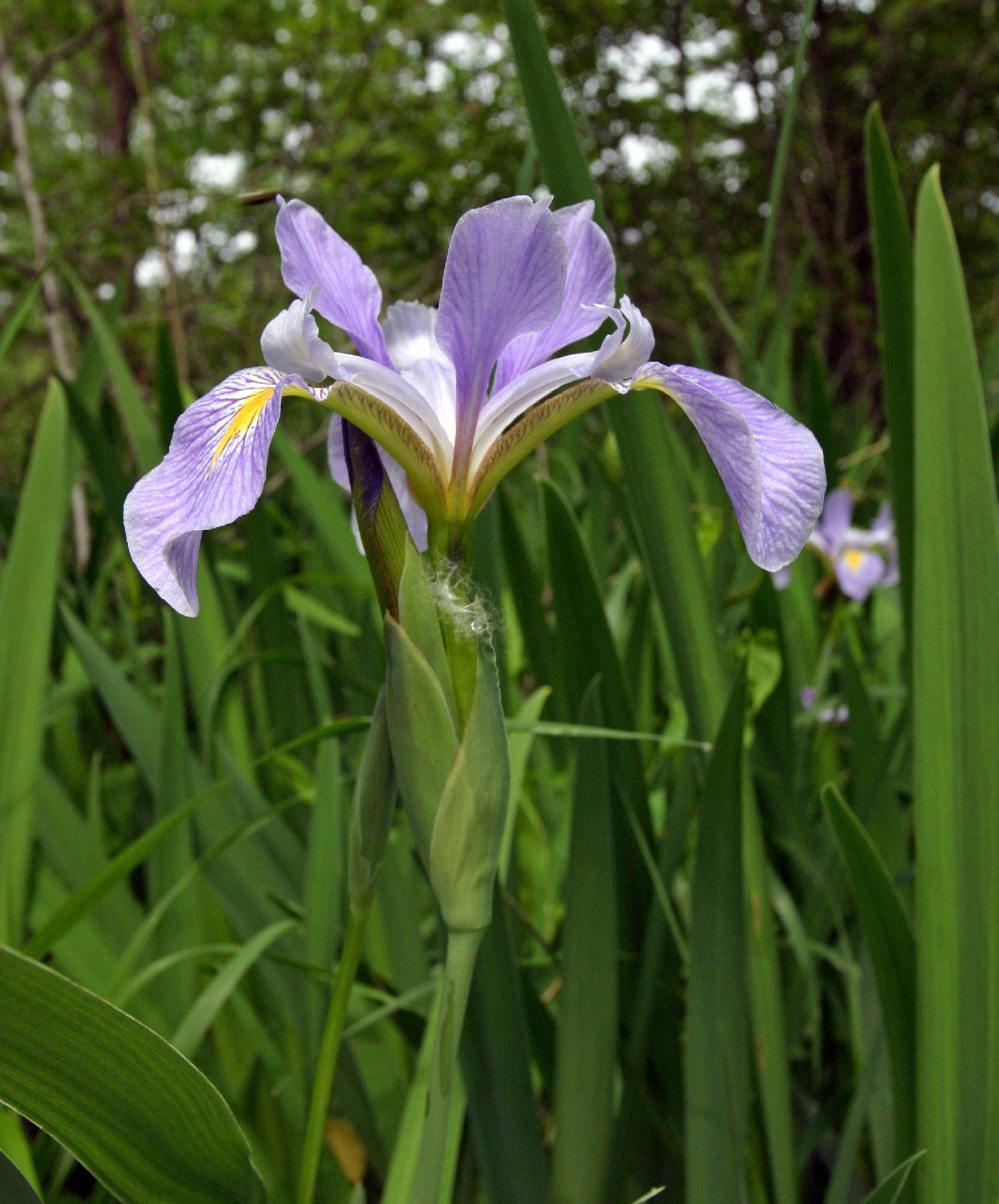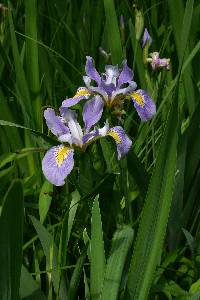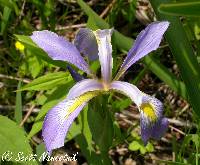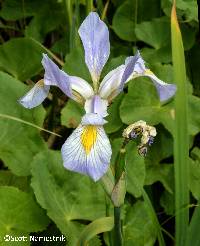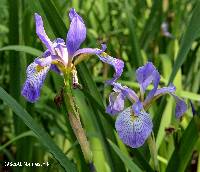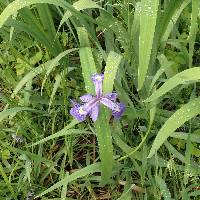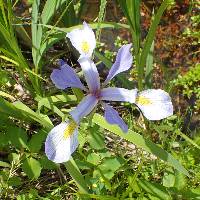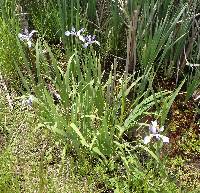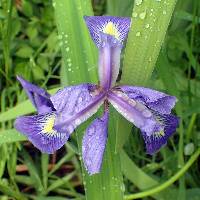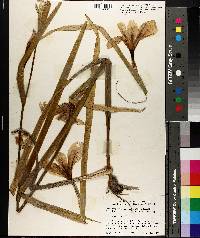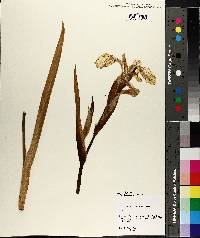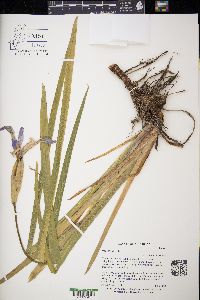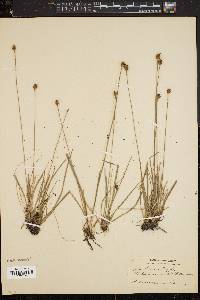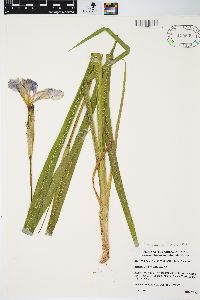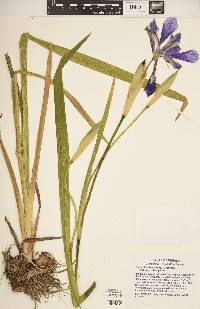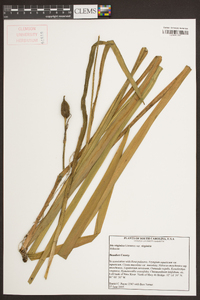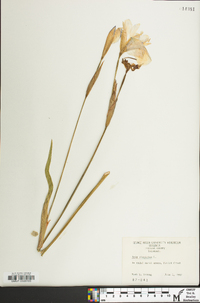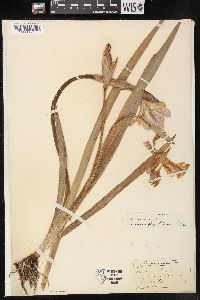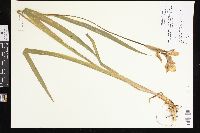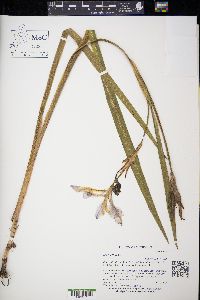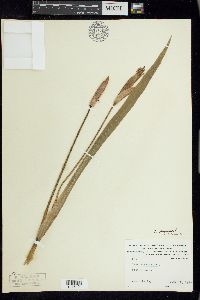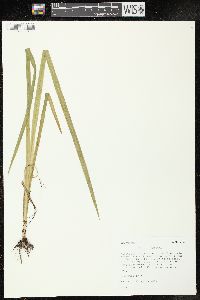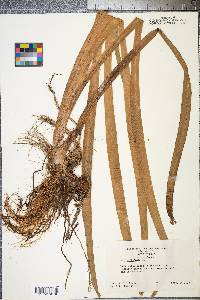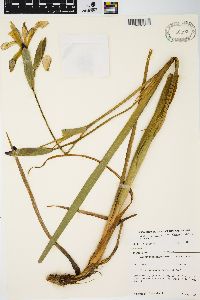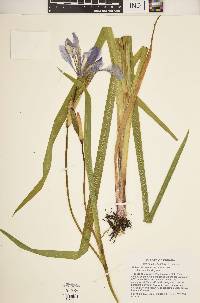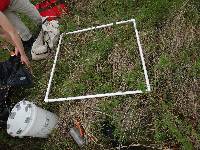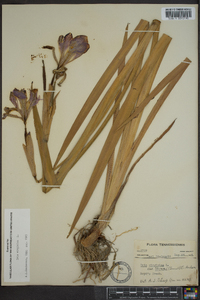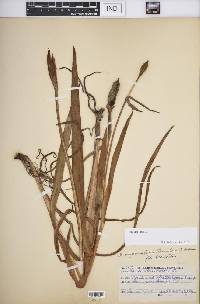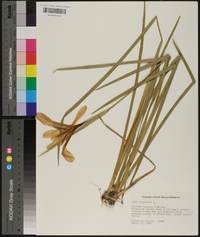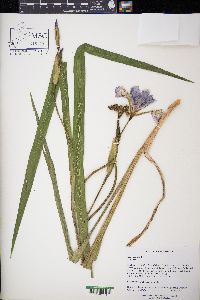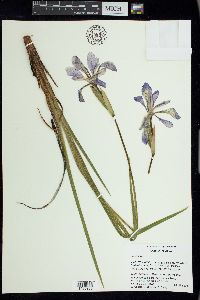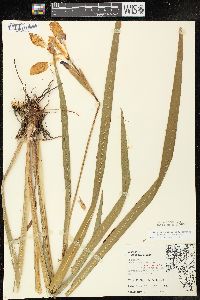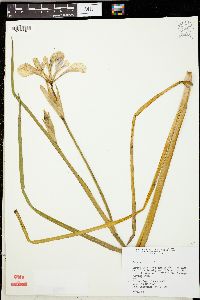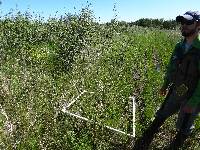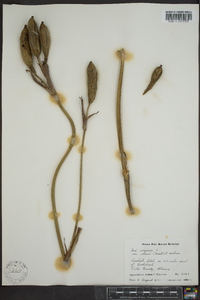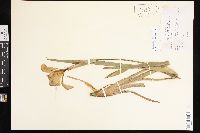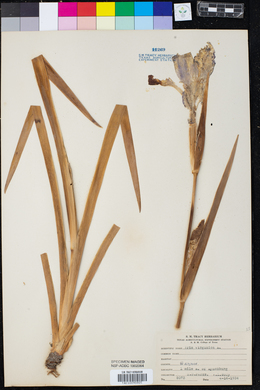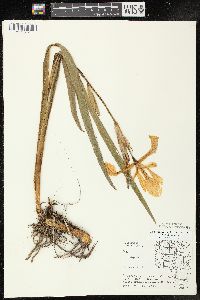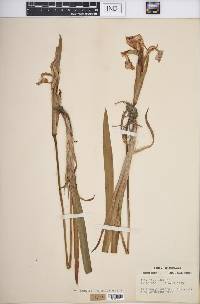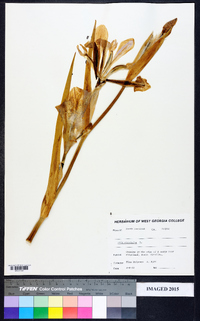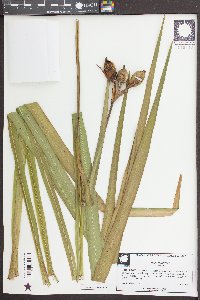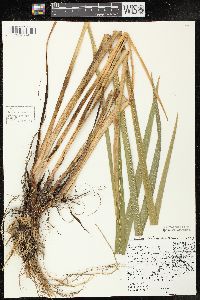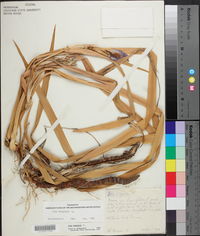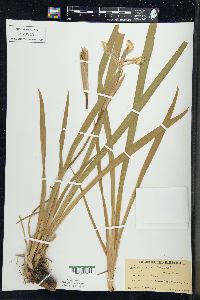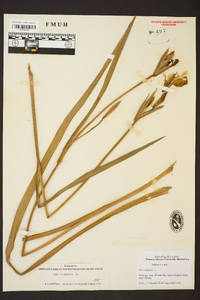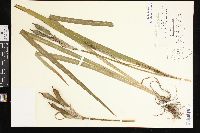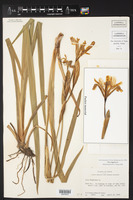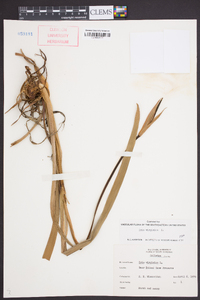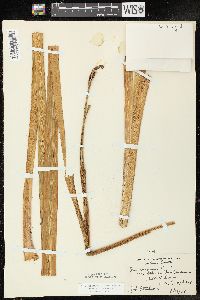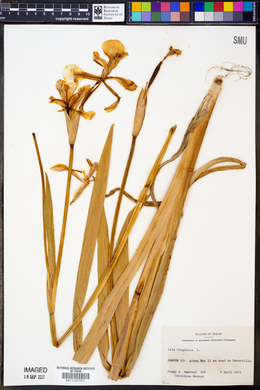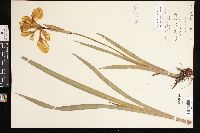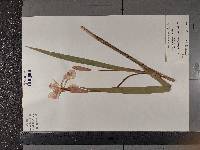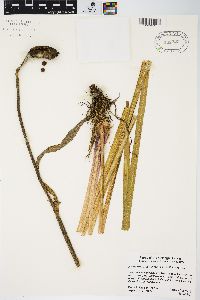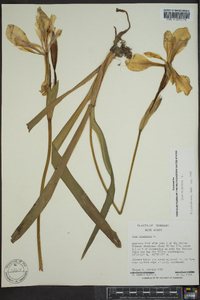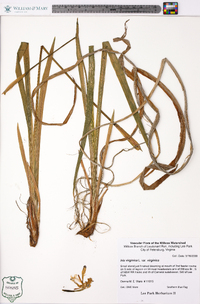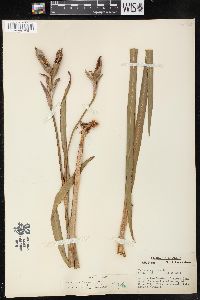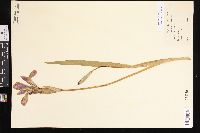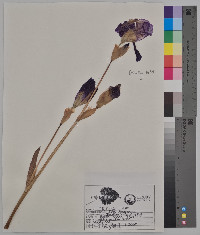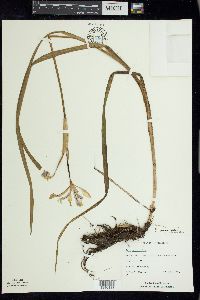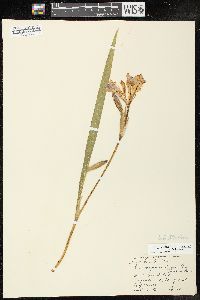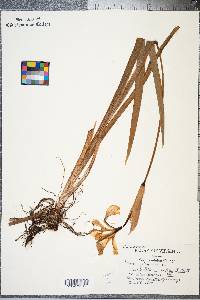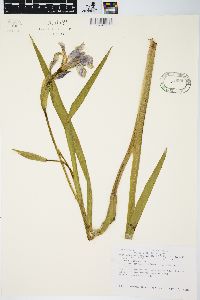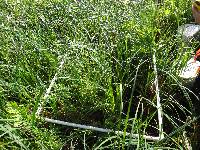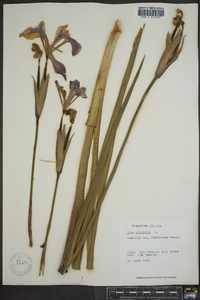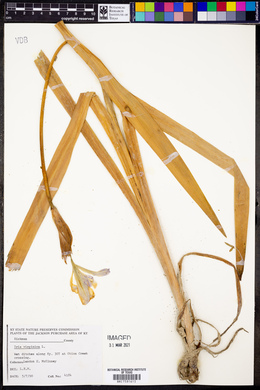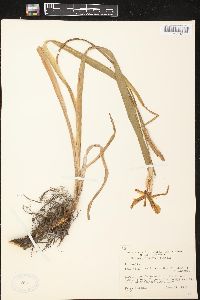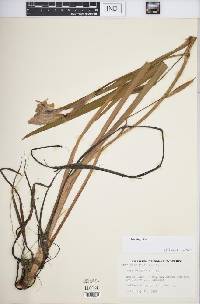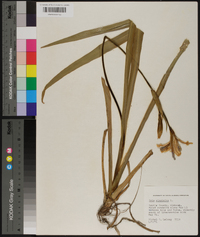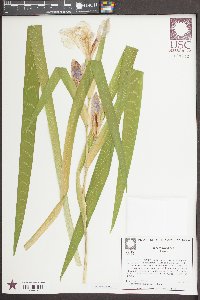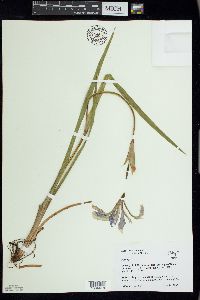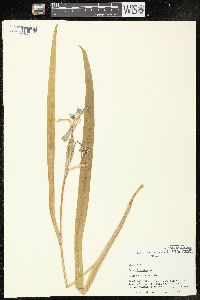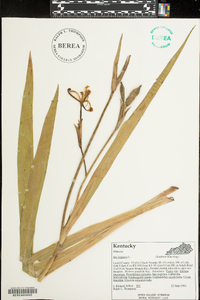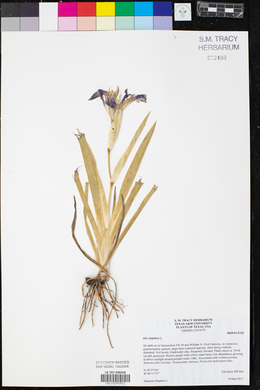Iris virginica
|
|
|
|
Family: Iridaceae
Virginia Blueflag, more...Virginia iris
|
Rhizomes many-branched, forming dense clumps, 2-4 cm diam., usually covered with remnants of old leaves; roots fleshy. Stems rather weak, often falling over after flowering, solid, usually 1-branched, 5-10 dm. Leaves: basal erect or often flexible, blade gray-green to bright green, buff to purplish basally, with several prominent ribs in mature leaves, linear-ensiform, 6-8 dm × 2.5-3 cm, apex acute. Inflorescence units 2-3-flowered, branch units 1-2-flowered; spathes compact, often with brown striations, ridged, unequal, outer 3-8 cm, inner 8-14 cm, firm, herbaceous. Flowers: perianth lavender to violet, rarely white; floral tube constricted above ovary, 1-2 cm; sepals spreading and arched, pale blue to purple with darker blue or purple lines, obovate to oval, 4-8.4 × 1.6-4 cm, base abruptly attenuate, claw green in median, bordered by yellow ground with blue or purple lines, yellow extending onto base of limb as finely pubescent signal patch; petals oblong-lanceolate to oblong-spatulate, 3-7 × 1-3 cm, claw greenish yellow with blue or purplish lines, apex often emarginate; ovary trigonal, 1.3-3.8 cm; style inwardly auriculate at convergences, 3-4.5 cm, crests reflexed, 0.7-2 cm; stigmas unlobed, with prominent triangular tongues, margins entire; pedicel 2.5-8 cm. Capsules ovoid, ellipsoid, or long-cylindric, trigonal or polygonal in cross section, 3-6 × 1-2 cm. Seeds in 2 rows per locule, pale brown, usually D-shaped, 5-8 mm, pitted, corky. 2n = 70, 72. Flowering May--Jun. Wetlands, margins of lakes and streams; Ont., Que.; Ala., Ark., D.C., Fla., Ga., Ill., Ind., Iowa, Kans., Ky., La., Md., Mich., Minn., Miss., Mo., Nebr., N.Y., N.C., Ohio, Okla., Pa., S.C., Tenn., Tex., Va., W.Va., Wis. Plants of Iris virginica from the southeastern and south-central states having stems 2-3-branched and seldom falling to the ground after flowering, and with capsules long-cylindric have been recognized as var. shrevei.
Plants softer than no. 9 [Iris versicolor L.]; lvs broadly linear to broadly ensiform, erect or arching; rhizomes thick, creeping, often forming extensive colonies; stem to 1 m; fls short- pediceled, 6-8 cm wide, lavender or light violet to blue-violet or purple, often dark-veined, rarely red- purple or white; sep spreading-recurved, with a bright yellow hairy blotch at the base of the blade; pet somewhat shorter than the sep; ovary 1.8-3.8 cm at anthesis; fr ovoid to ellipsoid-ovate, 4-7 cm, obtusely 3-angled, the valves strongly reflexed after dehiscence; seeds with a shallowly and irregularly pitted surface; 2n mostly = 70-72. Swamps, marshes, meadows, and ditches; coastal plain from Md. to Tex., and inland to Ont., Minn., and Okla. May-July. Var. virginica, mainly on the coastal plain, is up to 6 dm, unbranched or with a few very short branches; its frs are 4-7 cm and nearly as thick. (I. caroliniana; I. georgiana) Var. shrevei (Small) E. S. Anderson, the inland phase, is up to 1 m and more branched, usually with 1 or 2 widely spreading branches; its frs are 7-11 cm, half as thick, and the fls avg darker in shade than var. virginica. (I. shrevei) Gleason, Henry A. & Cronquist, Arthur J. 1991. Manual of vascular plants of northeastern United States and adjacent Canada. lxxv + 910 pp. ©The New York Botanical Garden. All rights reserved. Used by permission. From Flora of Indiana (1940) by Charles C. Deam This plant has been confused by many authors with Iris versicolor L. which has a more northern range. Iris versicolor has been found in the extreme northwestern part of Ohio and should be sought in our northern counties. Iris virginica is more or less frequent throughout Indiana along ditches, banks of streams, the borders of lakes, ponds, sloughs, and in low places in general. ...... Indiana Coefficient of Conservatism: C = 5 Wetland Indicator Status: OBL |
|
|
|

